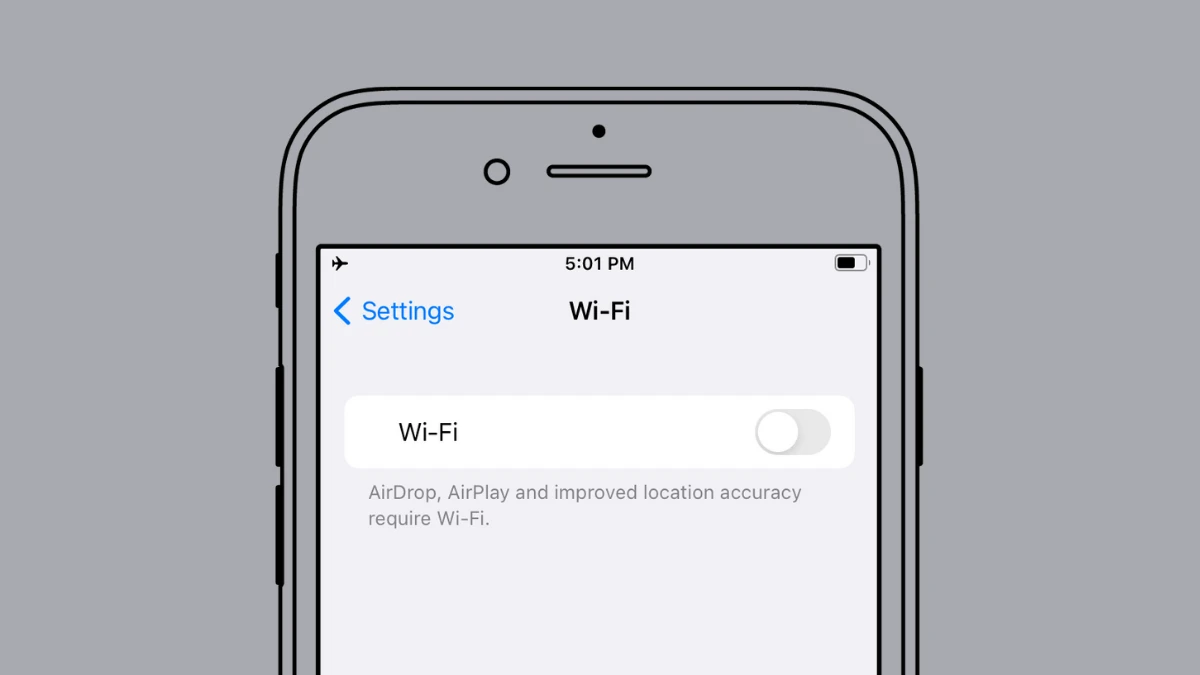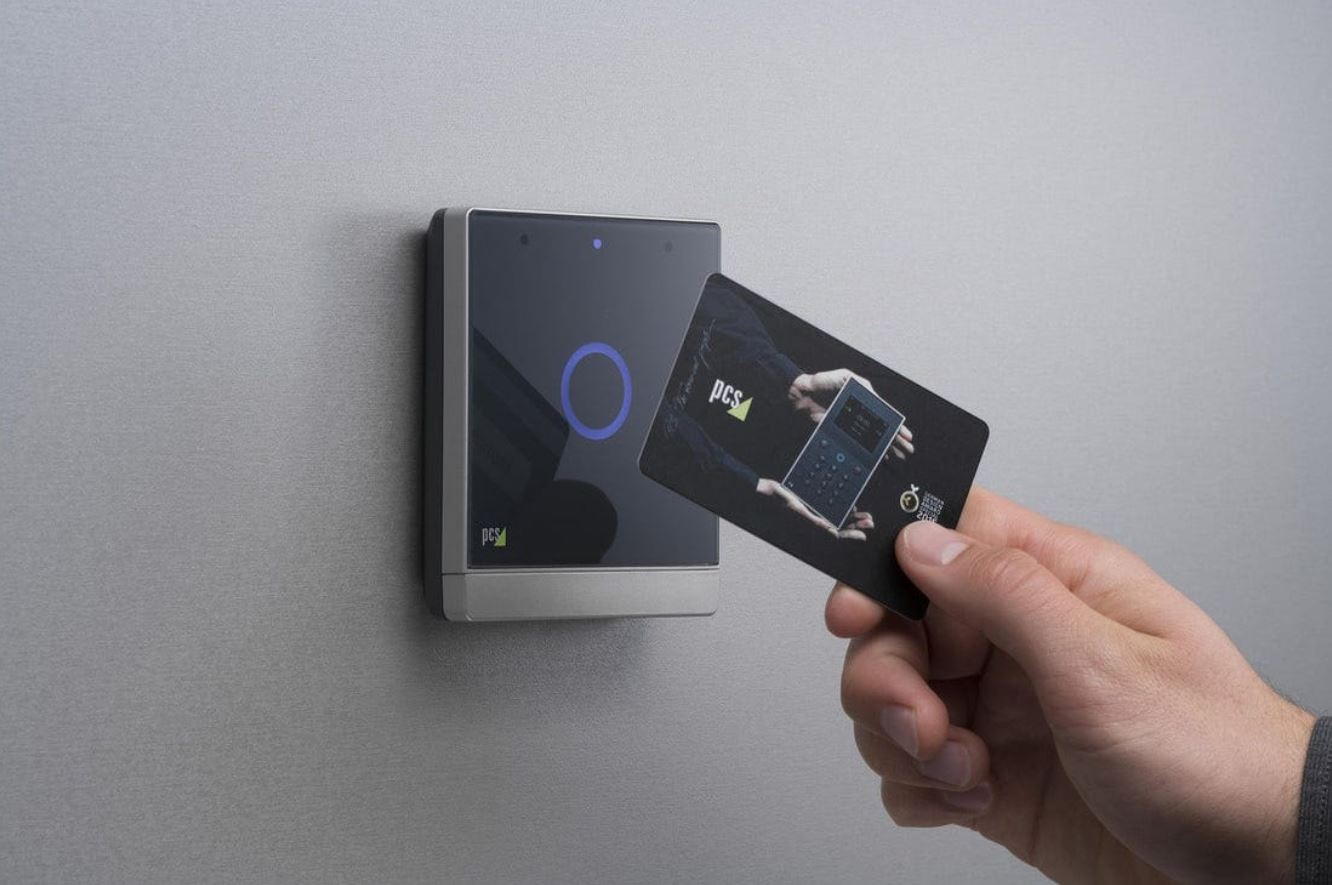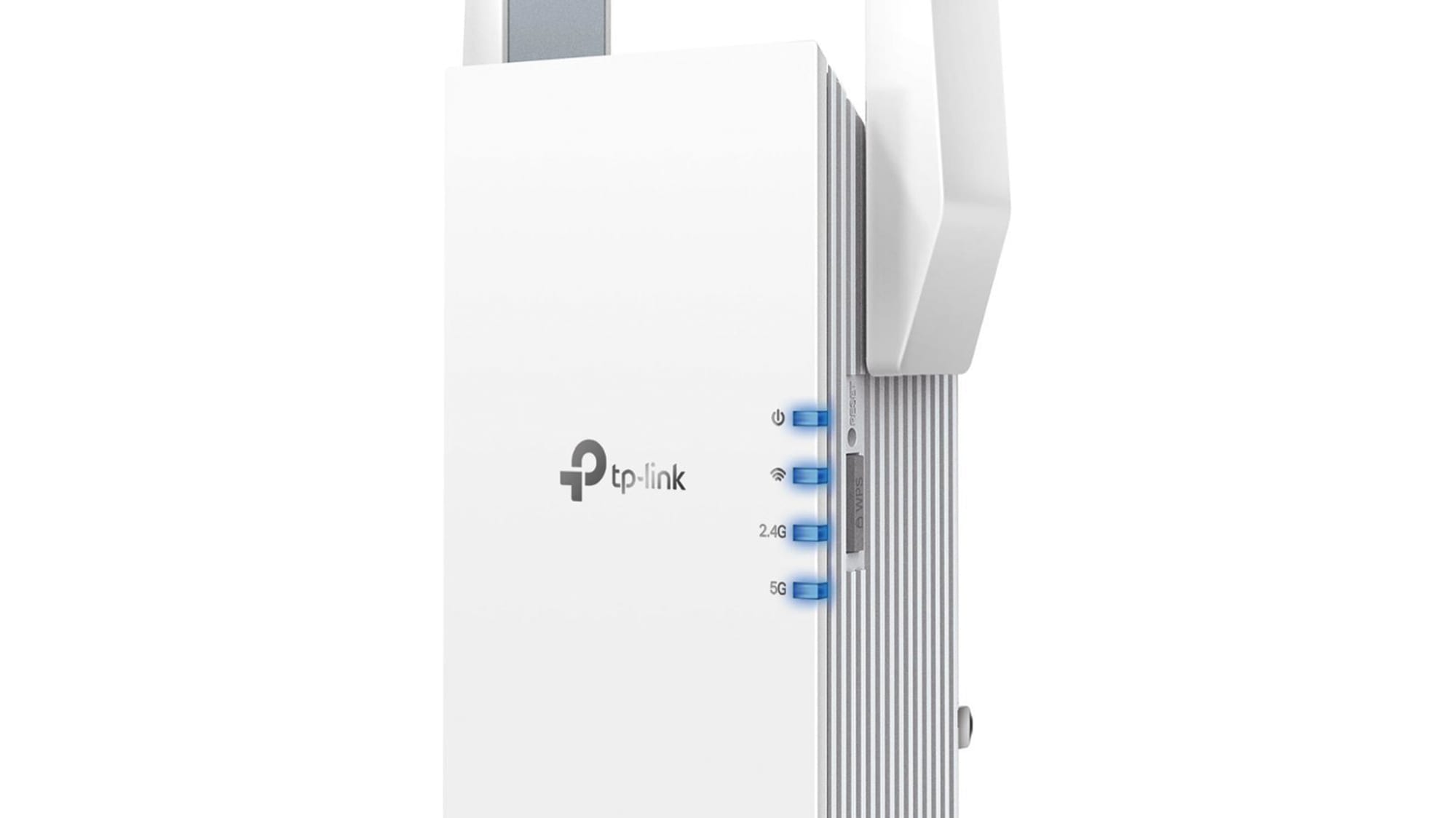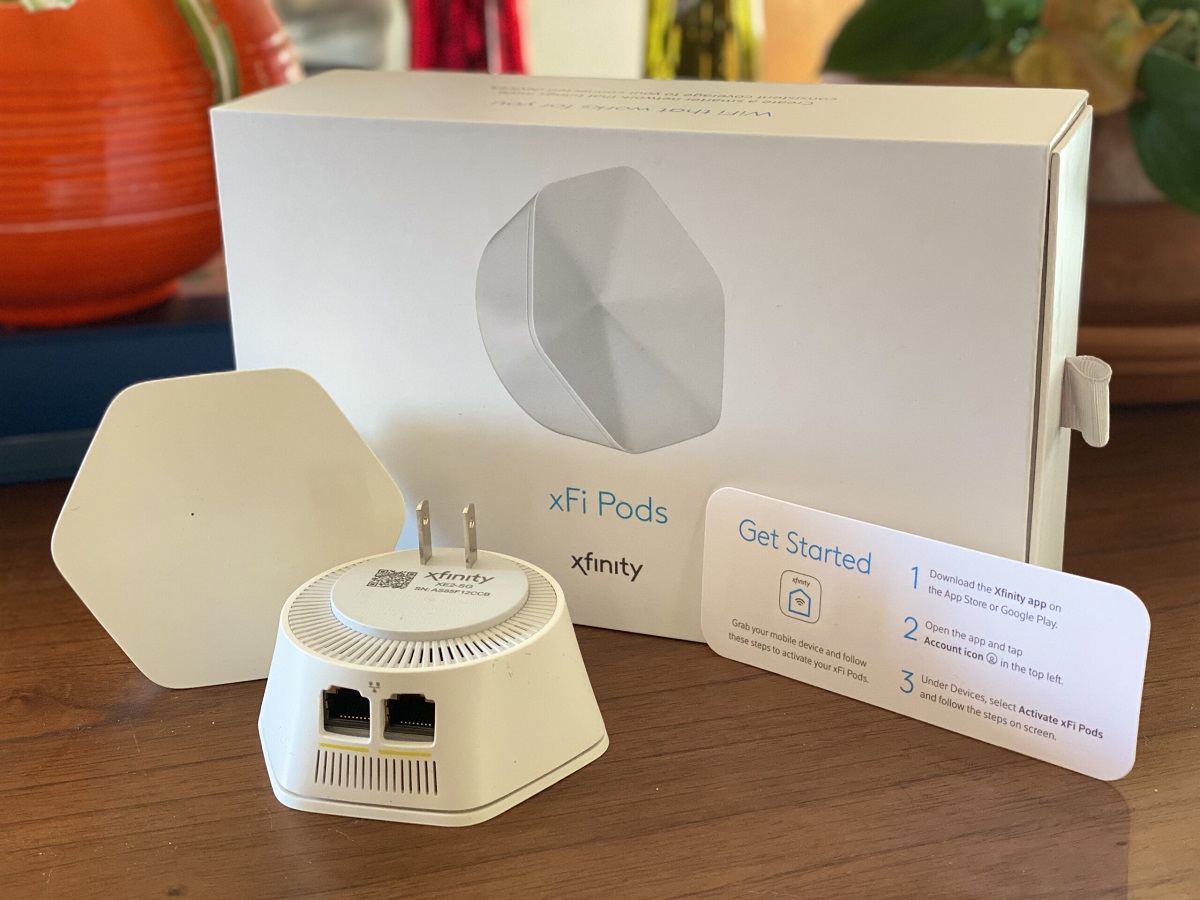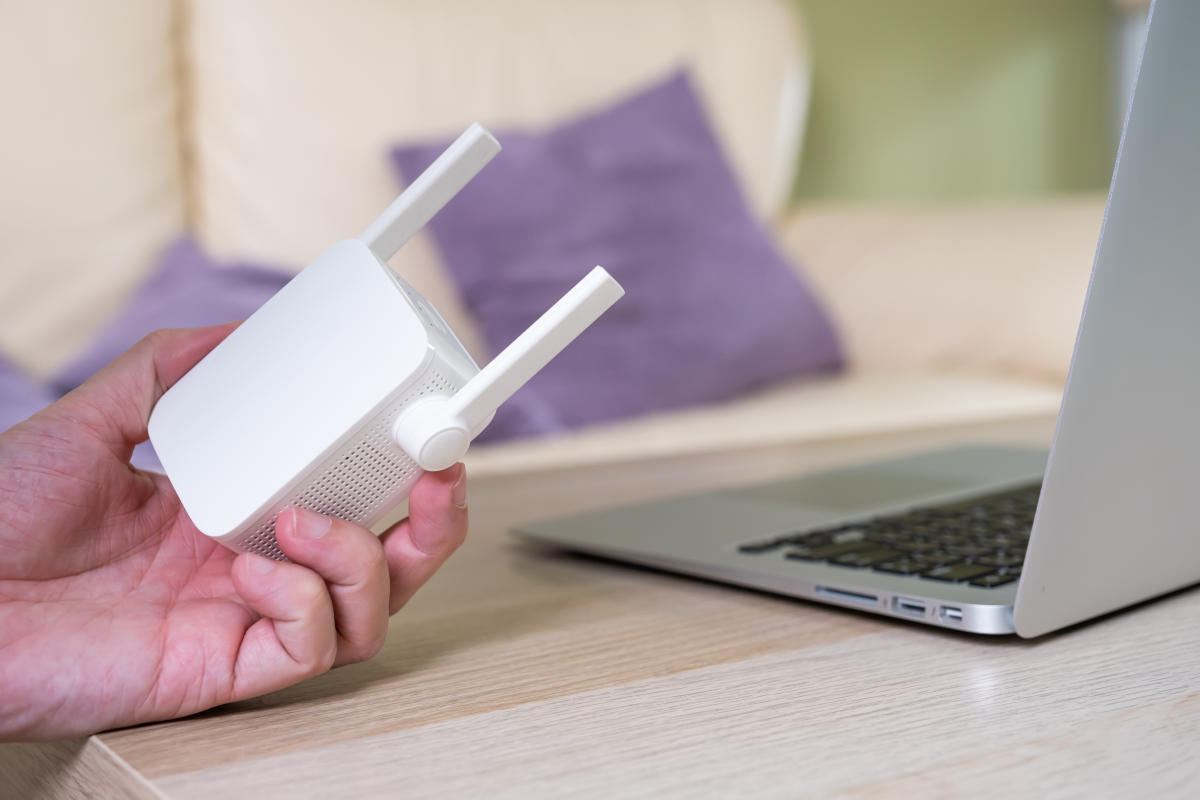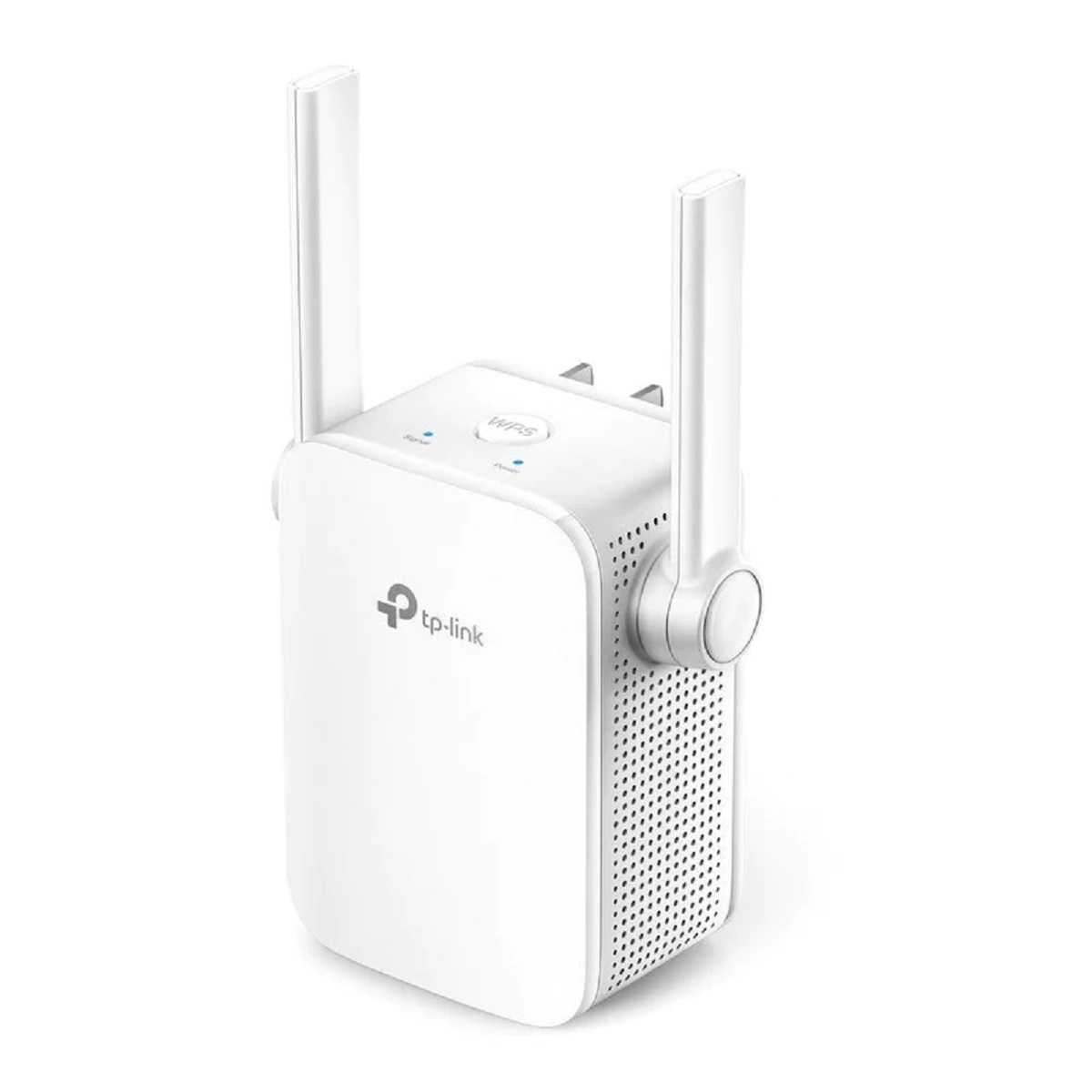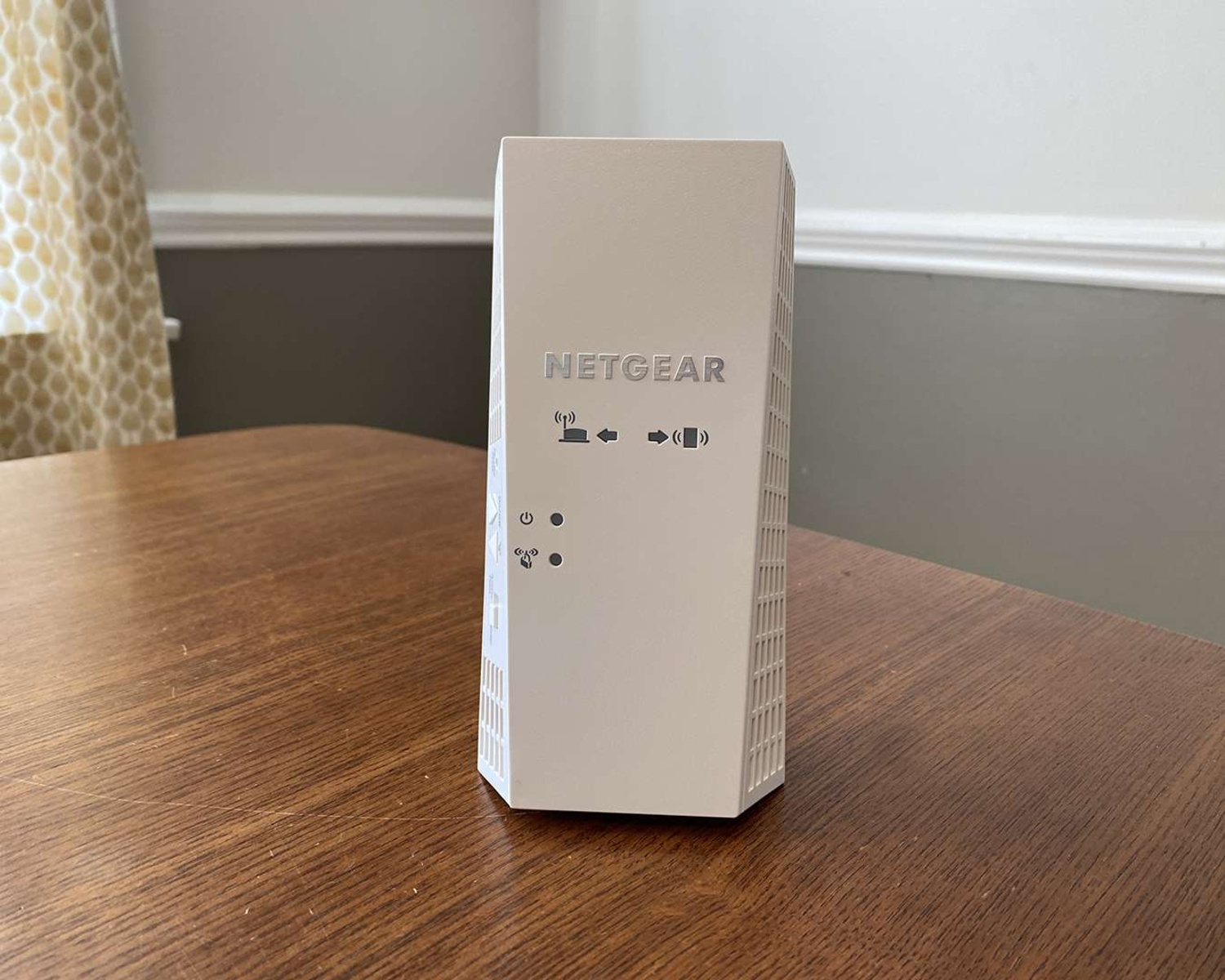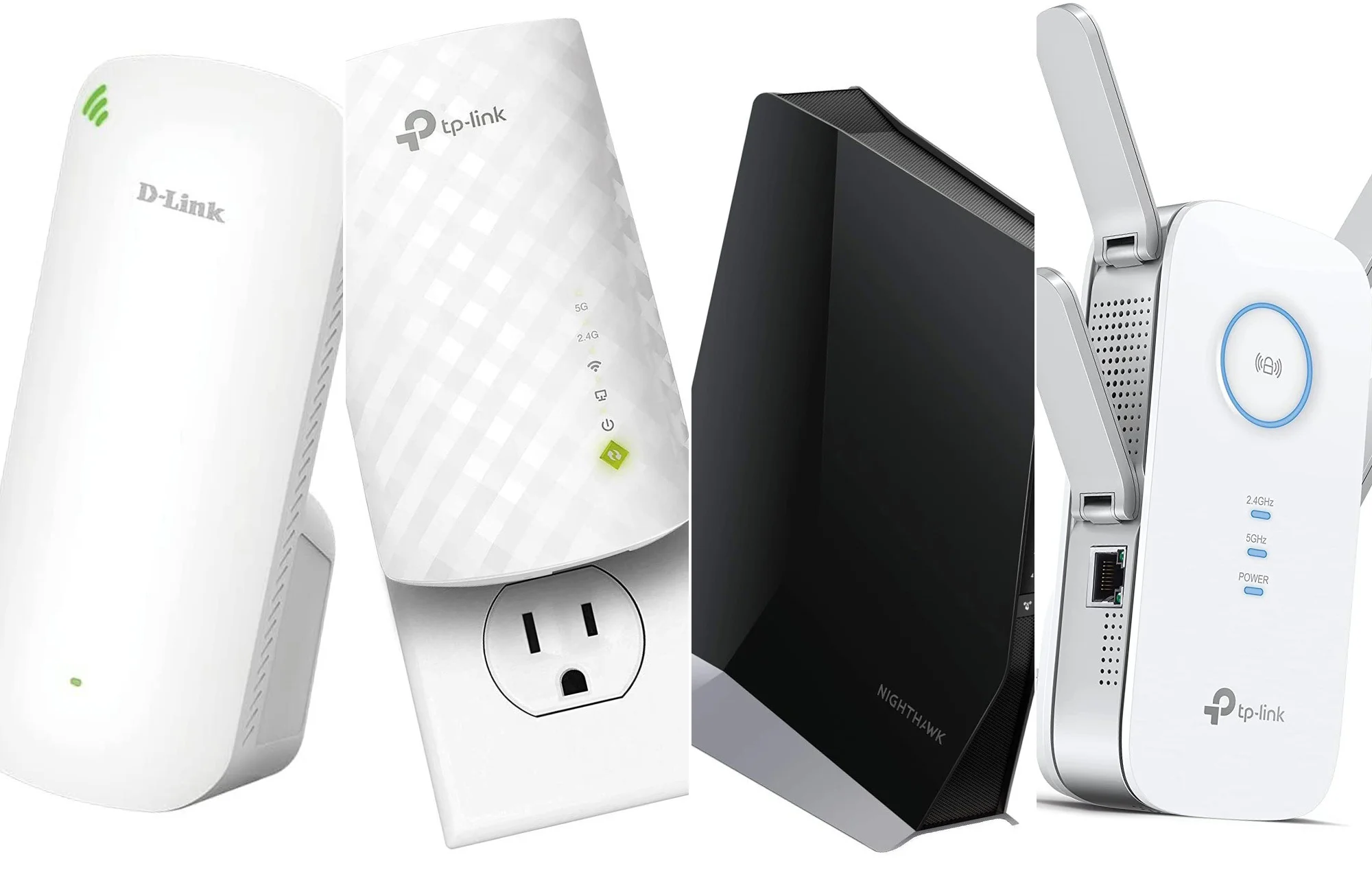Introduction
Having a reliable and stable internet connection has become an essential part of our everyday lives. We rely on wifi to connect our devices, stream videos, browse the web, and communicate with others. However, encountering issues with wifi connectivity can be frustrating, and one common problem that users experience is when their wifi option is greyed out.
When the wifi option is greyed out on your device, it means that you are unable to enable or access the wifi network. This issue can occur on various devices such as smartphones, tablets, laptops, or even gaming consoles. It can be a perplexing problem, leaving you feeling disconnected and unable to benefit from the convenience of wireless internet connectivity.
In this article, we will explore the common causes of wifi being greyed out and provide potential solutions to help you regain access to your wifi network. Whether you are experiencing this issue on your iPhone, Android device, or computer, understanding the underlying reasons and troubleshooting steps can aid in resolving the problem effectively.
Before diving into the solutions, it’s important to note that the causes of a greyed-out wifi option can vary. It could be due to software issues, hardware problems, or misconfigured settings. By identifying the root cause, you can implement the appropriate solution and get your wifi back up and running.
So, if you’re facing the frustration of a greyed-out wifi option on your device, don’t worry. With the guidance provided in this article, you’ll be equipped with the knowledge and tools to troubleshoot and resolve the issue. Let’s delve into the possible causes and solutions for this commonly encountered problem to get you connected again in no time.
Common Causes for Wifi Greying Out
When encountering a greyed-out wifi option, it is essential to understand the potential causes behind this issue. By identifying the root cause, you can take the necessary steps to resolve the problem. Here are some of the common causes for wifi greying out:
- Software Issues: One of the primary reasons for the wifi option being greyed out is software-related problems. It could be due to a recent software update or a glitch in the operating system. In some cases, conflicting apps or settings may interfere with the wifi functionality.
- Hardware Issues: Physical damage or faulty hardware components can also lead to a greyed-out wifi option. This could include issues with the wifi antenna, a loose or disconnected cable, or a malfunctioning network card. It is important to inspect your device for any visible damage or hardware-related issues.
- Wifi Network Settings: Misconfigured network settings can prevent your device from connecting to available wifi networks. This can happen if there are conflicting network configurations, incorrect password entries, or changes made to the wifi settings without proper knowledge.
- Network Provider Issues: Sometimes, the problem may not lie with your device, but rather with your internet service provider (ISP). Network outages or maintenance work being carried out by your ISP can result in a greyed-out wifi option. Contacting your ISP to inquire about any known issues can help determine if this is the case.
It’s worth noting that these causes may not be exhaustive, and there could be other reasons as well. However, understanding these common causes will give you a head start in troubleshooting the greyed-out wifi issue. In the following sections, we will discuss potential solutions to resolve this problem based on the identified cause.
Software Issues
Software-related problems are often the culprit behind a greyed-out wifi option on your device. These issues can arise due to various reasons, including software updates, glitches, or conflicting settings. Here are some potential software-related causes and solutions to resolve the greyed-out wifi problem:
- Outdated Operating System: If you are running an outdated version of the operating system on your device, it could be causing compatibility issues with the wifi feature. Check for any available software updates and install them to ensure you are running the latest version. This can help resolve any known software bugs or conflicts.
- Conflicting Apps: Certain apps or settings on your device may interfere with the wifi functionality, resulting in the greyed-out wifi option. Consider uninstalling any recently installed apps that might be causing conflicts. Additionally, check the app permissions and make sure there are no restrictions on accessing wifi networks.
- Reset Network Settings: Resetting the network settings on your device can help resolve software-related issues. This action will clear any saved network configurations, including wifi passwords and previously connected networks. To do this, go to the settings menu on your device, find the “Reset” or “Network Settings Reset” option, and follow the prompts to reset the network settings. Keep in mind that this will remove all saved wifi networks, so you will need to reconnect to them afterward.
- Safe Mode: Booting your device in safe mode can help determine if a third-party app is causing the wifi issue. In safe mode, only the essential system apps are active, bypassing any potential conflicts caused by third-party apps. If the wifi option is not greyed out in safe mode, it indicates that an app is causing the problem. You can then uninstall recently installed apps one by one until the issue is resolved.
By addressing software-related issues and implementing these potential solutions, you can troubleshoot and resolve the greyed-out wifi problem on your device. However, if the issue persists, it may be necessary to explore hardware-related causes and solutions, which we will discuss in the next section.
Hardware Issues
When encountering a greyed-out wifi option on your device, it’s important to consider the possibility of hardware-related issues. Physical damage or malfunctioning hardware components can prevent your device from connecting to wifi networks. Here are some potential hardware-related causes and solutions to resolve the greyed-out wifi problem:
- Inspect for Physical Damage: Examine your device for any visible signs of physical damage. This includes checking the wifi antenna, ports, and cables for any disconnections, frayed wires, or damage. If you notice any issues, you may need to get your device repaired by a professional or contact the manufacturer for assistance.
- Restart the Device: Sometimes, a simple restart can fix temporary glitches or conflicts that are causing the wifi option to be greyed out. Power off your device completely, wait for a few seconds, and then turn it back on. This will refresh the system and can help restore the normal functionality of the wifi feature.
- Reset Network Hardware: If you’re experiencing issues with wifi connectivity on multiple devices, it could indicate a problem with your network hardware. Try resetting your router or modem by unplugging the power source, waiting for a few seconds, and then plugging it back in. This can help clear any temporary glitches and restore the wifi functionality.
- External Factors: Sometimes, external factors such as electromagnetic interference or distance from the wifi router can affect the signal strength and lead to a greyed-out wifi option. Ensure that you are within the range of the wifi network you are trying to connect to and try moving closer to the router to see if that resolves the issue.
By addressing potential hardware-related causes and deploying these solutions, you can troubleshoot and resolve the greyed-out wifi issue on your device. However, if none of these solutions work, it may be necessary to further investigate network settings and contact your internet service provider or IT support for assistance, which we will explore in the following sections.
Wifi Network Settings
Misconfigured wifi network settings can also be a reason behind the greyed-out wifi option on your device. It’s essential to ensure that your network settings are correctly configured to establish a seamless connection. Here are some potential causes and solutions related to wifi network settings:
- Verify Network Name and Password: Double-check the network name (SSID) and password you are using to connect to the wifi network. Incorrect entries or typing errors can prevent your device from establishing a connection. Make sure you are entering the correct credentials, paying attention to capitalization and special characters.
- Forget and Reconnect to the Wifi Network: If you are still unable to connect, try forgetting the wifi network on your device and then reconnecting to it. Go to the wifi settings on your device, find the network causing the issue, and select the “Forget” or “Delete” option. Afterward, search for available networks again, select the desired network, and enter the password to reconnect.
- Change Wifi Channel: Interference from neighboring wifi networks can affect the stability and functionality of your wifi connection. Access your router settings and try changing the wifi channel to a less congested one. This can minimize interference and improve the signal strength, potentially resolving the greyed-out wifi issue.
- Reset Router to Factory Settings: If you have exhausted all other options and are still unable to resolve the wifi issue, consider resetting your router to its factory settings. This will restore the router to its default configurations and remove any potential settings conflicts. Keep in mind that this will also erase any customized settings you may have made, so take note of them beforehand.
By addressing wifi network settings-related causes and implementing these potential solutions, you can effectively troubleshoot and resolve the greyed-out wifi problem on your device. If the issue persists, it may be necessary to seek further assistance from your internet service provider (ISP) or IT support professionals, which we will discuss in the next section.
Potential Solutions for Wifi Greyed Out
Encountering a greyed-out wifi option on your device can be frustrating, but there are several potential solutions to help you regain access to your wifi network. By identifying the root cause and implementing the appropriate solution, you can effectively resolve the issue. Here are some potential solutions to try:
- Restarting Your Device: A simple yet effective solution is to restart your device. Power it off completely, wait for a few seconds, and then turn it back on. This can refresh the system and resolve temporary glitches or conflicts that may be causing the wifi option to be greyed out.
- Resetting Network Settings: Resetting the network settings on your device can help resolve misconfigured settings that may be causing the greyed-out wifi issue. Keep in mind that this will remove saved wifi networks, so you will need to reconnect to them afterward.
- Updating Software: Ensure that your device’s operating system and apps are up to date. Outdated software can sometimes cause compatibility issues that affect wifi functionality. Check for any available software updates and install them to resolve any known bugs or conflicts.
- Checking Hardware Connections: Inspect your device for any physical damage or loose connections that may be affecting wifi functionality. Ensure that the wifi antenna, ports, and cables are not damaged or disconnected. If necessary, seek professional repair or contact the manufacturer for assistance.
- Contacting ISP or IT Support: If all else fails, it may be necessary to reach out to your internet service provider (ISP) or IT support professionals for further assistance. They can help diagnose and resolve any network-related issues that may be causing the wifi option to be greyed out.
It’s important to note that these potential solutions may not apply to every situation, as the causes behind the greyed-out wifi issue can vary. However, by exploring these options, you’ll be equipped with the tools and knowledge to troubleshoot and resolve the problem effectively.
Remember, patience and persistence are key when dealing with technical issues. Don’t hesitate to try different solutions or seek expert help if needed. With determination, you will soon regain access to your wifi network and enjoy seamless internet connectivity once again.
Restarting Device
One of the simplest yet effective solutions for resolving the greyed-out wifi issue is to restart your device. Restarting can often fix temporary glitches or conflicts and restore the normal functionality of the wifi feature. Here’s how you can restart your device to address the problem:
1. Power Off: Look for the power button on your device and press and hold it until the power options appear on the screen. Select the “Power Off” or “Shut Down” option to turn off your device completely. Alternatively, you can remove the battery if your device allows for it.
2. Wait: Once your device is powered off, wait for a few seconds. This brief pause allows any residual power to dissipate and clears the device’s memory.
3. Power On: Press and hold the power button again to turn on your device. Wait for it to boot up and let the operating system load.
Upon restarting, check if the wifi option is still greyed out. In many cases, a simple restart can resolve the issue and restore the functionality of your wifi network. However, if the problem persists, you may need to explore other potential solutions or investigate other causes.
It’s worth noting that restarting your device is not limited to smartphones or tablets. This solution can be applied to laptops, computers, and even gaming consoles. By powering off your device and turning it back on, you give it a fresh start, allowing it to clear any temporary glitches or conflicts that may have been affecting the wifi functionality.
If restarting your device does not resolve the greyed-out wifi issue, there may be other factors at play. It’s recommended to continue troubleshooting by exploring other potential solutions outlined in this article or seeking assistance from internet service providers or IT support professionals.
Remember, perseverance is key when dealing with technical issues. Sometimes, a simple restart can do wonders and alleviate the problem with minimal effort. So, before trying more advanced solutions, give your device a fresh start by restarting it, and you might find that the greyed-out wifi option is no longer an issue.
Resetting Network Settings
If you are still experiencing the greyed-out wifi issue on your device, another potential solution to consider is resetting the network settings. Resetting the network settings can help resolve misconfigurations or conflicting settings that may be causing the problem. Here’s how you can reset network settings on your device:
Note: Resetting network settings will remove any saved wifi networks, including passwords, so make sure you have them handy before proceeding.
1. Open Settings: Go to the settings menu on your device. The location of the settings menu may vary depending on the operating system and device you are using. Look for the gear icon or the “Settings” app to access the settings menu.
2. Find the Network Settings: Once you are in the settings menu, locate the “Network” or “Connections” section. This is where you can access the wifi settings and make changes to network configurations.
3. Reset Network Settings: Within the network settings, look for the option to reset or restore network settings. It may be labeled as “Reset Network Settings,” “Reset Connections,” or something similar. Tap on the option to proceed.
4. Confirm the Reset: Your device may display a warning or confirmation message before resetting network settings. Read the message carefully to understand the implications and consequence of resetting. If you are sure you want to proceed, confirm the reset.
5. Reconnect to Wifi Networks: After the network settings are reset, your device will clear all saved wifi networks. To regain access to your wifi networks, go back to the wifi settings and search for available networks. Select the desired network and enter the password, if required, to reconnect.
By resetting network settings, you are essentially starting fresh with network configurations. This can help resolve any misconfigurations or conflicts that may have been causing the greyed-out wifi issue. It is important to note that you will need to manually reconnect to wifi networks and enter passwords again after the reset.
If resetting network settings does not resolve the problem, further troubleshooting steps may be required. Consider exploring other potential solutions discussed in this article or seeking assistance from internet service providers or IT support professionals to address the greyed-out wifi issue effectively.
Remember, resetting network settings should be approached with caution, as it will remove saved wifi networks and other network-related configurations. However, if misconfigurations or conflicts are causing the problem, resetting network settings can be an effective solution to restore wifi functionality on your device.
Updating Software
If you’re experiencing the greyed-out wifi issue on your device, one potential solution to consider is updating your software. Outdated software can sometimes cause compatibility issues with the wifi feature, resulting in the problem you’re facing. Here’s how you can update your software to resolve the issue:
1. Check for Updates: Go to the settings menu on your device and look for the “Software Update” or “System Update” option. Depending on the device and operating system, the location of this option may vary. Tap on it to check for available updates.
2. Install Updates: If there are any updates available, your device will display them. Follow the on-screen instructions to download and install the updates. It’s recommended to connect to a stable wifi network or use a reliable cellular data connection to ensure a successful update.
3. Restart Your Device: Once the updates are installed, restart your device. This allows the new software changes to take effect and can help resolve any issues that were causing the greyed-out wifi problem.
By updating your software, you ensure that your device has the latest bug fixes, security patches, and performance enhancements. Often, software updates address known issues and improve system stability, including wifi functionality. Therefore, keeping your software up to date is crucial for a smooth and hassle-free experience.
If updating your software doesn’t resolve the greyed-out wifi issue, consider exploring other potential solutions discussed in this article or reaching out to internet service providers or IT support professionals for further assistance. They can help diagnose the problem more comprehensively and provide guidance tailored to your specific device and setup.
Remember, software updates not only improve the overall performance and security of your device but can also address wifi-related issues. By ensuring that your software is up to date, you’re taking a proactive step in troubleshooting the greyed-out wifi problem and maintaining the optimal functioning of your device.
Checking Hardware Connections
When encountering the greyed-out wifi issue on your device, it’s essential to consider the possibility of hardware-related problems. Issues with hardware components can prevent your device from connecting to wifi networks properly. Here are some steps to check the hardware connections and resolve any potential issues:
1. Inspect for Physical Damage: Examine your device for any visible signs of physical damage. Pay attention to the wifi antenna, ports, and cables, ensuring that they are not damaged or disconnected. If you notice any issues, you may need to contact a professional repair service or the device manufacturer for assistance.
2. Reposition the Device: Sometimes, the position or orientation of your device can affect wifi signal reception. Try repositioning your device closer to the wifi source or router. Additionally, ensure that there are no obstructions, such as walls or electronic devices, interfering with the wifi signal.
3. Check Cabling and Connections: Verify that all cables and connections related to your wifi setup are secure and properly connected. This includes cables from the router to the modem, as well as any ethernet cables connecting your device to the router. Disconnect and reconnect any loose or unsecured connections.
4. Restart Network Hardware: In some cases, issues with the router or modem can contribute to the greyed-out wifi problem. Try power cycling your network hardware by unplugging the power source, waiting for a few seconds, and then plugging it back in. This can help resolve any temporary glitches or conflicts affecting the hardware.
By checking the hardware connections and ensuring that everything is secure and properly connected, you can eliminate any potential issues related to physical damage or loose connections. If the greyed-out wifi issue persists, it may be necessary to explore other potential solutions or seek assistance from internet service providers or IT support professionals.
Remember, thorough hardware inspection and repositioning can help diagnose any hardware-related issues that may be affecting your device’s wifi functionality. By addressing these issues, you increase the chances of resolving the greyed-out wifi problem and restoring stable internet connectivity.
Contacting ISP or IT Support
If you have exhausted all potential solutions and are still facing the greyed-out wifi issue on your device, it may be time to seek assistance from your internet service provider (ISP) or IT support professionals. They possess expertise in diagnosing and resolving network-related issues. Here are some steps to take when contacting your ISP or IT support:
1. Gather Information: Before reaching out for support, collect relevant information about the issue you are facing. Note down the details such as the type of device you are using, the operating system version, any error messages you have encountered, and the steps you have already taken to troubleshoot the problem.
2. Locate Contact Information: Visit the website of your ISP to find their contact information. Look for a dedicated technical support or customer service number, email address, or live chat option. If you are contacting IT support within your organization, reach out to the designated support channels provided by your company.
3. Describe the Issue: When contacting support, clearly explain the greyed-out wifi problem you are experiencing. Provide the gathered information and details about the troubleshooting steps you have already taken. This will help support personnel understand the situation and provide more accurate assistance.
4. Follow Instructions: Listen carefully to the instructions provided by the support personnel and follow them diligently. They may guide you through further troubleshooting steps or request additional information to diagnose the issue more accurately.
5. Keep Track of Case Reference Number: If the support personnel assigns a case reference number to your issue, make a note of it. This will help in future communications or follow-ups regarding the progress of your case.
By reaching out to your ISP or IT support, you are leveraging their expertise and resources to resolve the greyed-out wifi issue. They can investigate network-related problems, check for outages, or provide guidance specific to your device and network setup.
Remember, contacting ISP or IT support is usually the final step after exhausting other potential solutions. They can provide more in-depth assistance and help you overcome the issue with their specialized knowledge. Be patient and cooperative during the support process, and follow any instructions given to increase the chances of a successful resolution.
Conclusion
Dealing with the frustration of a greyed-out wifi option on your device can be a daunting experience. However, by understanding the potential causes and implementing the appropriate solutions, you can regain access to your wifi network and enjoy seamless internet connectivity once again.
In this article, we explored the common causes behind the greyed-out wifi issue, including software and hardware problems, misconfigured network settings, and network provider issues. We discussed potential solutions such as restarting the device, resetting network settings, updating software, checking hardware connections, and contacting ISP or IT support.
It’s important to remember that troubleshooting the greyed-out wifi problem can involve a trial-and-error process, as the root cause may vary from one device to another. Patience and persistence are key when identifying and resolving the issue. It may be necessary to try multiple solutions or seek assistance from professionals if needed.
By implementing the suggested solutions and following the troubleshooting steps, you can increase the chances of resolving the greyed-out wifi problem. However, if the issue persists or you are unable to identify the cause, it’s recommended to contact your internet service provider or IT support for further guidance.
Lastly, remember to keep your device and software up to date, as this can prevent future compatibility or performance issues. Regularly checking for updates and maintaining a healthy wifi network setup will ensure a smooth and uninterrupted internet experience.
We hope that this article has provided you with valuable insights and solutions to address the greyed-out wifi issue on your device. Stay connected, stay informed, and enjoy the seamless benefits of wifi connectivity in your daily life.







